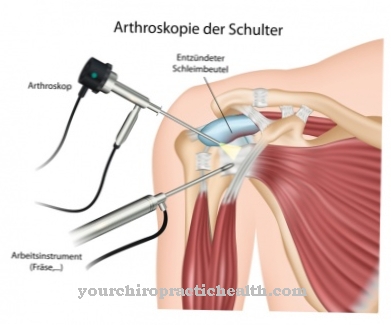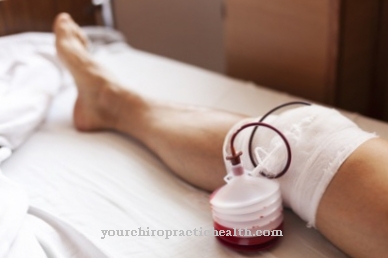Calf wrap are lukewarm or cold compresses that are mainly wrapped around the calves to counteract fever and cramps. They promise quick relief from the symptoms, but they also involve some risks.
What are calf wraps?

Calf wraps are towels that are warmed up and then wrapped around the calves or arms. This adjusts the body temperature and, in the best case, reduces the symptoms.
There are different types of wraps. Some wraps are treated with vinegar, others are treated with quark and healing earth is often used to achieve a corresponding effect. The application methods can also be very different. Mostly, calf wraps are used as home remedies, but they are also used in professional medicine.
Leg compresses are often used, especially in combination with classic preparations for fever. Despite the many possible uses, variants and additives, calf compresses are not entirely risk-free. There are a number of problems that can arise with the use of the wraps.
Function, effect & goals
Leg wraps are towels that are wrapped around the legs and often around the arms to reduce a fever. They are usually lukewarm and can be made in different ways. It is possible to add certain additives such as vinegar or quark to the wraps, which are intended to increase the effect. There are also warm and cold wraps.
While cold wraps are mostly used for fever to remove heat from the body and relieve inflammation, warm wraps are used for cramps. They promote blood circulation and are therefore suitable for the treatment of various diseases. The primary goal of a wrap treatment is to lower fever or relieve cramps. Both are possible because the warm or cold compresses intervene in the blood circulation and also in the circulation. As this is not entirely without risk, a doctor should always be asked for advice before using a wrap.
When using diapers, it should be noted that not every child perceives them as comfortable. Parents should therefore first try lukewarm compresses and then decide whether further treatment with the tried and tested home remedy makes sense. Please also note: Wraps are only effective if you have adequate bed rest. Especially immediately after the treatment, it is necessary to spend a lot of time in bed so that the calf compresses can take full effect. When treating children, careful attention should be paid to their signals. Are you comfortable with the wraps? When can you feel relief? Is the wrap too hot or too cold? All of these questions need to be answered.
Finally: only use the compress if there are no acute inflammations or open wounds. In both cases it makes more sense to see a doctor. This can initiate appropriate treatment and also explain the risks and dangers.
You can find your medication here
➔ Medicines for fever and chillsRisks, side effects & dangers
Leg wraps can lower fever and help with various other conditions. However, they also harbor some risks that should not be underestimated. In the worst case, this can lead to the patient's circulation collapsing during the illness.
This is usually the case when the wraps are too cold and have been soaked in ice water, for example. Then the person concerned first gets cold, he begins to freeze and he gets dizzy. In the worst case, the circulation breaks down after a few minutes. To avoid this, the wraps should be maximally lukewarm. In addition, a doctor should be consulted if the temperature is over 39 degrees. This can initiate additional therapy methods and thus reduce the risks.
A general danger with calf compresses is temperature build-up. The heat builds up under the compress and, in the worst case, the fever increases. To avoid this, the wraps must be changed regularly. It also makes sense to use different wraps that do not overload the circulation. Appropriate materials should also be used. Tree and linen towels are particularly suitable for leg wraps, as the heat can circulate well and the legs are well ventilated. This also allows oxygen to reach the calves, which speeds up healing.
Leg wraps should not be used on young children and infants. There is a risk that the cold stimulus will cause a great deal of restlessness and thus an increase in the fever. In addition, the vessels narrow and heat dissipation is disturbed. For these reasons, it makes sense not to use leg wraps on small children. Instead, the body should be brought to an appropriate temperature through ablutions.
Antipyretic drugs can also be used and used in combination with leg wraps. In any case, the treatment methods should be discussed in advance with a doctor. In addition, attention must be paid to what type of disease it is. Not all types of fever and cramps can be treated with compresses, for example because the body is weakened too much or the circulatory system is damaged by the defense mechanisms. It makes most sense to see a doctor if you have a fever and to decide together with him whether the use of calf compresses makes sense.













.jpg)

.jpg)
.jpg)











.jpg)